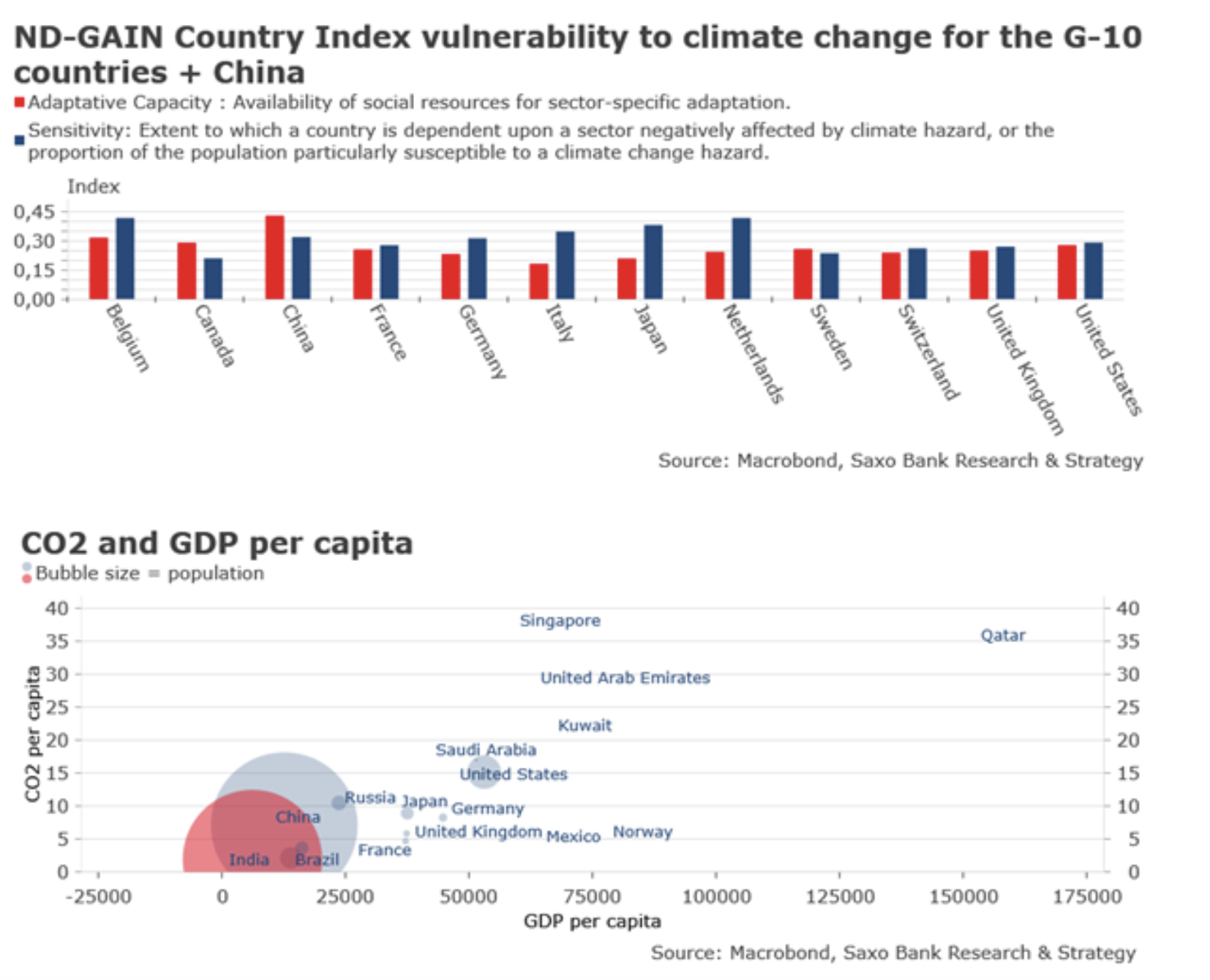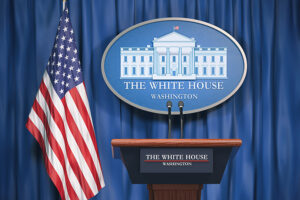Climate Change - Time for Ecology - Saxo Bank's QXNUMX Forecast
For the first time in the US presidential election, climate change has become one of the main themes - alongside the economy, racial tensions and police brutality. In recent years, increasing evidence of human-induced climate change has received widespread attention. In August this year alone, the United States recorded an average temperature above its XNUMX-year average. In September, dramatic fires devastated tracts of forests and homes in the eastern states. Climate change phenomena are becoming more frequent and more violent.
About the Author
 Christopher Dembik - French economist of Polish origin. Is a global head of macroeconomic research at a Danish investment bank Saxo Bank (a subsidiary of the Chinese company Geely serving 860 HNW customers around the world). He is also an advisor to French parliamentarians and a member of the Polish think tank CASE, which took first place in the economic think tank in Central and Eastern Europe according to a report Global Go to Think Tank Index. As a global head of macroeconomic research, he supports branches, providing analysis of global monetary policy and macroeconomic developments to institutional and HNW clients in Europe and MENA. He is a regular commentator in international media (CNBC, Reuters, FT, BFM TV, France 2, etc.) and a speaker at international events (COP22, MENA Investment Congress, Paris Global Conference, etc.).
Christopher Dembik - French economist of Polish origin. Is a global head of macroeconomic research at a Danish investment bank Saxo Bank (a subsidiary of the Chinese company Geely serving 860 HNW customers around the world). He is also an advisor to French parliamentarians and a member of the Polish think tank CASE, which took first place in the economic think tank in Central and Eastern Europe according to a report Global Go to Think Tank Index. As a global head of macroeconomic research, he supports branches, providing analysis of global monetary policy and macroeconomic developments to institutional and HNW clients in Europe and MENA. He is a regular commentator in international media (CNBC, Reuters, FT, BFM TV, France 2, etc.) and a speaker at international events (COP22, MENA Investment Congress, Paris Global Conference, etc.).
Climate change can no longer be denied, and even President Trump, who has been rather skeptical in the past, refrains from categorical protests in this regard. Climate change is now a political topic that could bring about a significant change on election day - unlike the presidential election so far. According to political scientist Professor Jon Krosnick of Stanford University, who has been analyzing pre-election polls for more than two decades, 25% of Americans will vote for a candidate in line with his approach to climate change: this is a record result for this issue. Only abortion is seen as a more important issue - 31% of voters make their decision dependent on the candidates' approach to this topic.
On the issue of climate change itself, the Democrats are in a better position than the Republicans. In mid-July, Joe Biden unveiled his ambitious US $ 2 trillion climate program, or 2,5% of GDP, covering more than four years. We discuss the details of this program in question-and-answer format, as well as its possible implications in the event of a Biden victory.
1. What are the main demands of the $ 2 trillion Biden climate program?
For Democrats, the $ 2 trillion climate program is a way to both mitigate the impact of climate change on everyday life and create new jobs to compensate for the losses suffered by the pandemic. The most important goal is to achieve carbon neutrality by 2050 at the latest, thanks to better energy efficiency and increased electricity production from nuclear and hydro power plants. The program also aims to create millions of jobs by making infrastructure resistant to natural disasters (eg by coastal renovation, large-scale tree planting, bridge and road renovation, etc.).
HOW TO INVEST IN CO2 EMISSION RIGHTS
The program does not include a federal-level carbon tax, the proceeds of which are earmarked for the reduction of greenhouse gas emissions, which is still under debate in the Democratic Party. Biden, however, is looking to rejoin the 2015 Paris Agreement, which aims to prevent global temperatures from rising more than 2 ° C above pre-industrial levels later this century.
2. After almost fifty years of hesitation, the Democrats have finally come to terms with nuclear energy as a way to fight climate change. Why is this a revolutionary breakthrough?
Because it's a radical change of approach. For the first time since 1972, Democratic Party voters view nuclear energy as a way to reduce dependence on fossil fuels. Finally, the democrats took a pragmatic approach, recognizing that the current renewable energy technology is still simply inefficient, and that nuclear energy - carbon neutral - is part of the response to mitigating climate change.
The shift to ecology through nuclear energy is often a global security concern (following the Three Mile Island accident in 1979 and the recent Fukushima Daiichi disaster), making some doubt whether this solution is green enough to be part of a green new deal. According to Biden's team, the answer to this question is yes.
Regarding security, Democrats are turning to new, safer technologies, such as molten salt and liquid metal reactors, to gain public support. However, in order for this support to translate into new investments extending the life of the current reactors and contributing to the construction of new ones (two reactors are currently under construction), more time has to be passed.
3. The Democrats' Green Program aims to produce 100% fossil-free electricity by 2035. Is this realistic?
At this point, two-thirds of US electricity is produced using fossil fuels; by comparison, only 20% comes from nuclear sources (corresponding to almost 63% of carbon-free energy production), and 18% from renewable sources. Achieving 100% fossil-free electricity production in such a short time is an ambitious goal of steady electricity demand and a massive increase in capital expenditure - particularly in the area of nuclear power, where investment has decreased significantly since 2015.
4. What are the implications of this program for the Fed and financial markets?
Responding to climate change means creating a green financial base that can directly finance the ambitious environmental agenda of the Democrats. Currently, most of the policies and regulations related to ESG (environmental, social and governance issues) are voluntary ("comply or explain") and are largely dependent on the views of the asset owners about investing in ESG. Thanks to Biden, we are seeing new incentives to move towards stricter regulation, as is already the case in the EU (under the EU Action Plan for Sustainable Development and the EU taxonomy that directly addresses green bonds and low-carbon benchmarks).
Federal Reserve it will play a very specific role in this new infrastructure and can integrate climate change more openly in its mandate - the process has already started. It can take steps to move towards a green shift as part of its supervision of financial institutions, for example by increasing capital requirements for fossil energy project loans or by lowering requirements for green solutions.
























![Forex Club – Tax 9 – Settle tax on a foreign broker [Download the Application] Forex Club - Tax 9](https://forexclub.pl/wp-content/uploads/2024/02/Forex-Club-Podatek-9-184x120.jpg?v=1709046278)
![Trading View platform – solutions tailored to the needs of traders [Review] trading view review](https://forexclub.pl/wp-content/uploads/2024/03/trading-view-recenzja-184x120.jpg?v=1709558918)
![How to connect your FP Markets account to the Trading View platform [Guide] fp markets trading view](https://forexclub.pl/wp-content/uploads/2024/02/fp-markets-trading-view-184x120.jpg?v=1708677291)
![How to invest in ChatGPT and AI? Stocks and ETFs [Guide] how to invest in chatgpt and artificial intelligence](https://forexclub.pl/wp-content/uploads/2023/02/jak-inwestowac-w-chatgpt-i-sztuczna-inteligencje-184x120.jpg?v=1676364263)


![WeWork – the anatomy of the collapse of a company valued at $47 billion [WeWork, part II] wework bankruptcy story](https://forexclub.pl/wp-content/uploads/2024/04/wework-bankructwo-historia-184x120.jpg?v=1711729561)
![Adam Neumann – the man who screwed up Softbank [WeWork, part AND] adam neumann wework](https://forexclub.pl/wp-content/uploads/2024/04/adam-neumann-wework-184x120.jpg?v=1711728724)





![How to transfer shares to another brokerage office [Procedure description] how to transfer shares to another brokerage house](https://forexclub.pl/wp-content/uploads/2024/03/jak-przeniesc-akcje-do-innego-biura-maklerskiego-184x120.jpg?v=1709556924)

![The most common mistakes of a beginner trader - Mr Yogi [VIDEO] Scalping - The most common mistakes of a beginner trader - VIDEO](https://forexclub.pl/wp-content/uploads/2024/03/Scalping-Najczestsze-bledy-poczatkujacego-tradera-VIDEO-184x120.jpg?v=1711601376)
![Learning patience: No position is also a position - Mr Yogi [VIDEO] Scalping - Learning patience - No position is also a position - VIDEO](https://forexclub.pl/wp-content/uploads/2024/03/Scalping-Nauka-cierpliwosci-Brak-pozycji-to-tez-pozycja-VIDEO-184x120.jpg?v=1710999249)
![When to exit a position and how to minimize losses - Mr Yogi [VIDEO] Scalping - When to exit a position and how to minimize losses - VIDEO](https://forexclub.pl/wp-content/uploads/2024/03/Scalping-Kiedy-wyjsc-z-pozycji-i-jak-minimalizowac-straty-VIDEO-184x120.jpg?v=1710336731)




![Who will win the US elections? [Video comment] Who will win the US elections](https://forexclub.pl/wp-content/uploads/2020/10/Kto-wygra-wybory-w-USA-300x200.jpg?v=1603704365)













